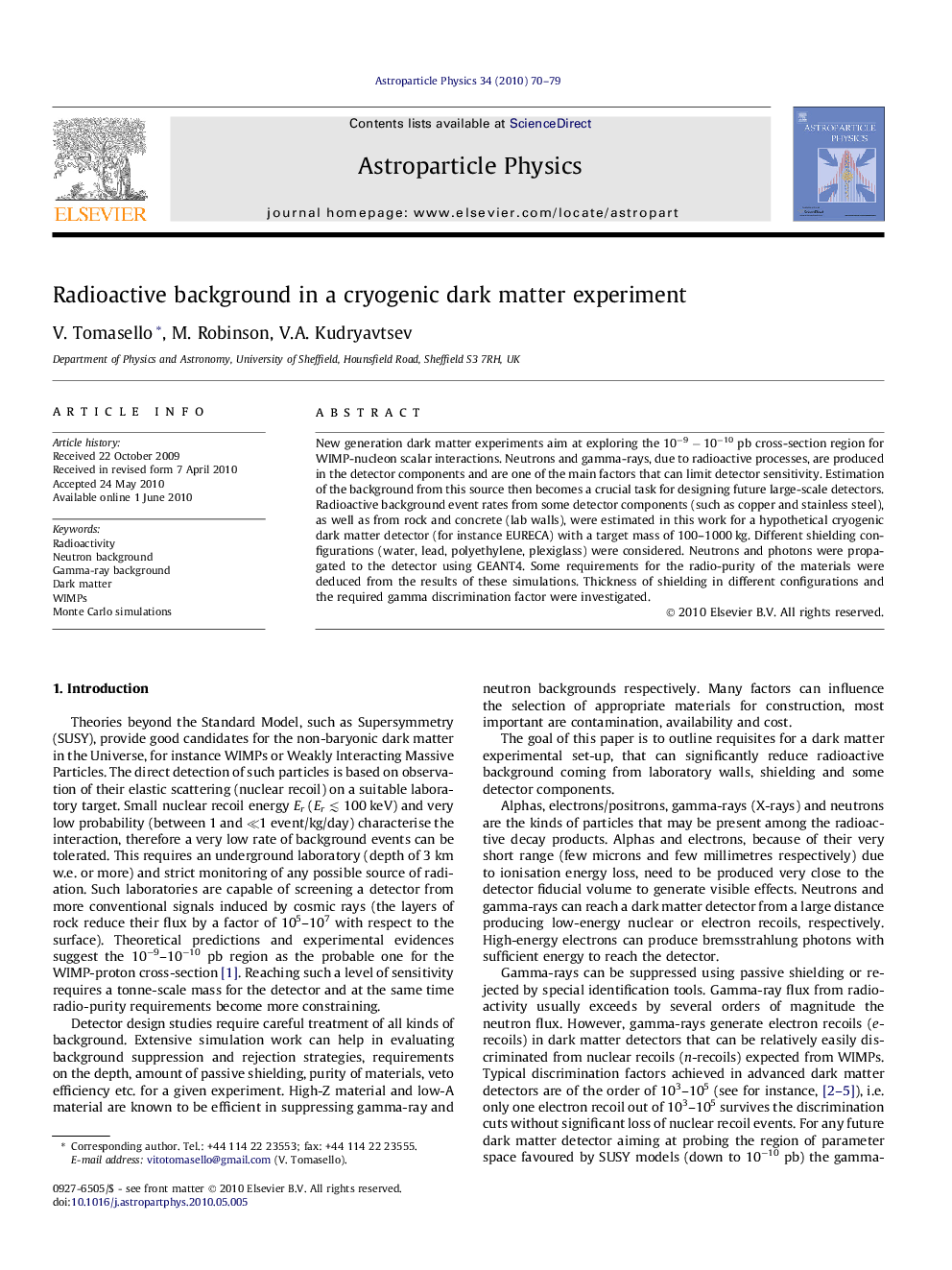| Article ID | Journal | Published Year | Pages | File Type |
|---|---|---|---|---|
| 1771119 | Astroparticle Physics | 2010 | 10 Pages |
Abstract
New generation dark matter experiments aim at exploring the 10â9 â 10â10 pb cross-section region for WIMP-nucleon scalar interactions. Neutrons and gamma-rays, due to radioactive processes, are produced in the detector components and are one of the main factors that can limit detector sensitivity. Estimation of the background from this source then becomes a crucial task for designing future large-scale detectors. Radioactive background event rates from some detector components (such as copper and stainless steel), as well as from rock and concrete (lab walls), were estimated in this work for a hypothetical cryogenic dark matter detector (for instance EURECA) with a target mass of 100-1000 kg. Different shielding configurations (water, lead, polyethylene, plexiglass) were considered. Neutrons and photons were propagated to the detector using GEANT4. Some requirements for the radio-purity of the materials were deduced from the results of these simulations. Thickness of shielding in different configurations and the required gamma discrimination factor were investigated.
Related Topics
Physical Sciences and Engineering
Physics and Astronomy
Astronomy and Astrophysics
Authors
V. Tomasello, M. Robinson, V.A. Kudryavtsev,
